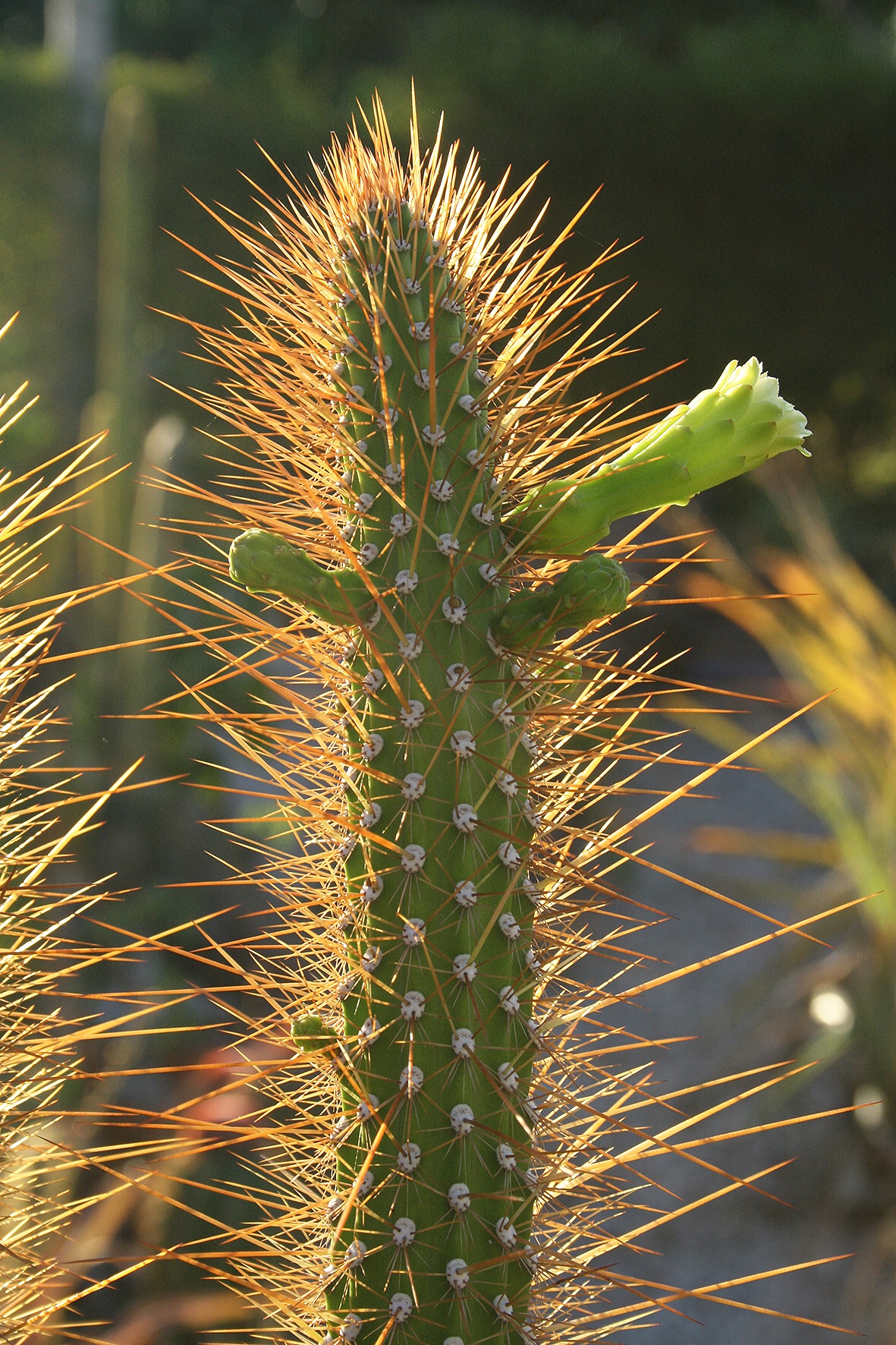|
Echinopsis Mirabilis
''Setiechinopsis'' is a monotypic genus of cacti A cactus (, or less commonly, cactus) is a member of the plant family Cactaceae, a family comprising about 127 genera with some 1750 known species of the order Caryophyllales. The word ''cactus'' derives, through Latin, from the Ancient Greek .... Its only species, ''Setiechinopsis mirabilis'', is native to Argentina. Description ''Setiechinopsis mirabilis'' grows singly. The cylindrical, dull yellowish-green to brown-green shoots reach heights of 12 to 15 centimeters with a diameter of up to 2 centimeters. There are eleven ribs that are slightly wavy. The single, protruding and straight central spine is 1 to 1.5 centimeters long. The nine to 14 radial spines are slender and straight. The narrow, tubular, white flowers appear near the tips of the shoots and are rather unpleasantly scented. They are 11 to 12 centimeters long. Their bracts are spread out. The fruits reach a diameter of 0.6 to 1 centimeter and are 3.5 to 4 ce ... [...More Info...] [...Related Items...] OR: [Wikipedia] [Google] [Baidu] |
Monotypic Taxon
In biology, a monotypic taxon is a taxonomic group (taxon) that contains only one immediately subordinate taxon. A monotypic species is one that does not include subspecies or smaller, infraspecific taxa. In the case of genera, the term "unispecific" or "monospecific" is sometimes preferred. In botanical nomenclature, a monotypic genus is a genus in the special case where a genus and a single species are simultaneously described. In contrast, an oligotypic taxon contains more than one but only a very few subordinate taxa. Examples Just as the term ''monotypic'' is used to describe a taxon including only one subdivision, the contained taxon can also be referred to as monotypic within the higher-level taxon, e.g. a genus monotypic within a family. Some examples of monotypic groups are: Plants * In the order Amborellales, there is only one family, Amborellaceae and there is only one genus, '' Amborella'', and in this genus there is only one species, namely ''Amborella trichopoda ... [...More Info...] [...Related Items...] OR: [Wikipedia] [Google] [Baidu] |
Genus
Genus ( plural genera ) is a taxonomic rank used in the biological classification of extant taxon, living and fossil organisms as well as Virus classification#ICTV classification, viruses. In the hierarchy of biological classification, genus comes above species and below family (taxonomy), family. In binomial nomenclature, the genus name forms the first part of the binomial species name for each species within the genus. :E.g. ''Panthera leo'' (lion) and ''Panthera onca'' (jaguar) are two species within the genus ''Panthera''. ''Panthera'' is a genus within the family Felidae. The composition of a genus is determined by taxonomy (biology), taxonomists. The standards for genus classification are not strictly codified, so different authorities often produce different classifications for genera. There are some general practices used, however, including the idea that a newly defined genus should fulfill these three criteria to be descriptively useful: # monophyly – all descendants ... [...More Info...] [...Related Items...] OR: [Wikipedia] [Google] [Baidu] |
Cactus
A cactus (, or less commonly, cactus) is a member of the plant family Cactaceae, a family comprising about 127 genera with some 1750 known species of the order Caryophyllales. The word ''cactus'' derives, through Latin, from the Ancient Greek word (''káktos''), a name originally used by Theophrastus for a spiny plant whose identity is now not certain. Cacti occur in a wide range of shapes and sizes. Although some species live in quite humid environments, most cacti live in habitats subject to at least some drought. Many live in extremely dry environments, even being found in the Atacama Desert, one of the driest places on Earth. Because of this, cacti show many adaptations to conserve water. For example, almost all cacti are succulents, meaning they have thickened, fleshy parts adapted to store water. Unlike many other succulents, the stem is the only part of most cacti where this vital process takes place. Most species of cacti have lost true leaves, retaining only spines, ... [...More Info...] [...Related Items...] OR: [Wikipedia] [Google] [Baidu] |
Carlos Luis Spegazzini
Carlos may refer to: Places ;Canada * Carlos, Alberta, a locality ;United States * Carlos, Indiana, an unincorporated community * Carlos, Maryland, a place in Allegany County * Carlos, Minnesota, a small city * Carlos, West Virginia ;Elsewhere * Carlos (crater), Montes Apenninus, LQ12, Moon; a lunar crater near Mons Hadley People * Carlos (given name), including a list of name holders * Carlos (surname), including a list of name holders Sportspeople * Carlos (Timorese footballer) (born 1986) * Carlos (footballer, born 1995), Brazilian footballer * Carlos (footballer, born 1985), Brazilian footballer Others * Carlos (Calusa) (died 1567), king or paramount chief of the Calusa people of Southwest Florida * Carlos (DJ) (born 1966), British DJ * Carlos (singer) (1943—2008), French entertainer * Carlos the Jackal, a Venezuelan terrorist *Carlos (DJ) (born 2010) Guyanese DJ Arts and entertainment * ''Carlos'' (miniseries), 2010 biopic about the terrorist Carlos the Jackal * ''C ... [...More Info...] [...Related Items...] OR: [Wikipedia] [Google] [Baidu] |
Cereeae
Cereeae are a tribe of cactus belonging to the Cactoideae The Cactoideae are the largest subfamily of the cactus family, Cactaceae. Around 80% of cactus species belong to this subfamily. , the internal classification of the family Cactaceae remained uncertain and subject to change. A classification inc ... subfamily. Description Cereeae are tree-like or shrubby, sometimes climbing plants. Your mostly elongated to spherical, ribbed and thorny shoots are not articulated. The flowers, which usually appear on the side of the shoot, open during the day or at night. Their pericarpels usually have a few scales or are completely glabrous. The fleshy, berry-like, bursting or non-bursting fruits often have a blackening adherent flower remnant. The small to large seeds are oval. The hilum and micropyle of the seeds are fused, one appendage is absent. Genera References [...More Info...] [...Related Items...] OR: [Wikipedia] [Google] [Baidu] |

